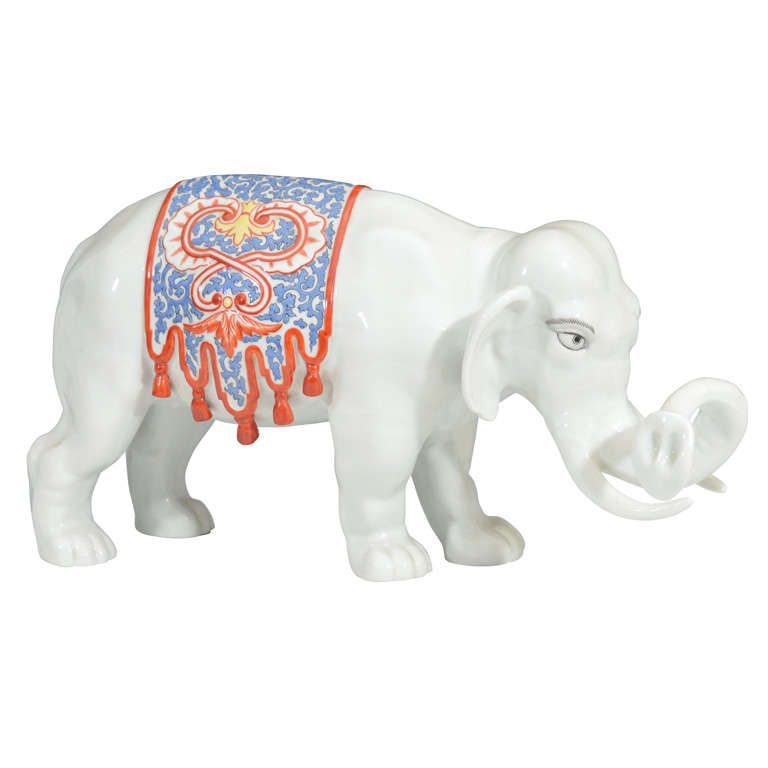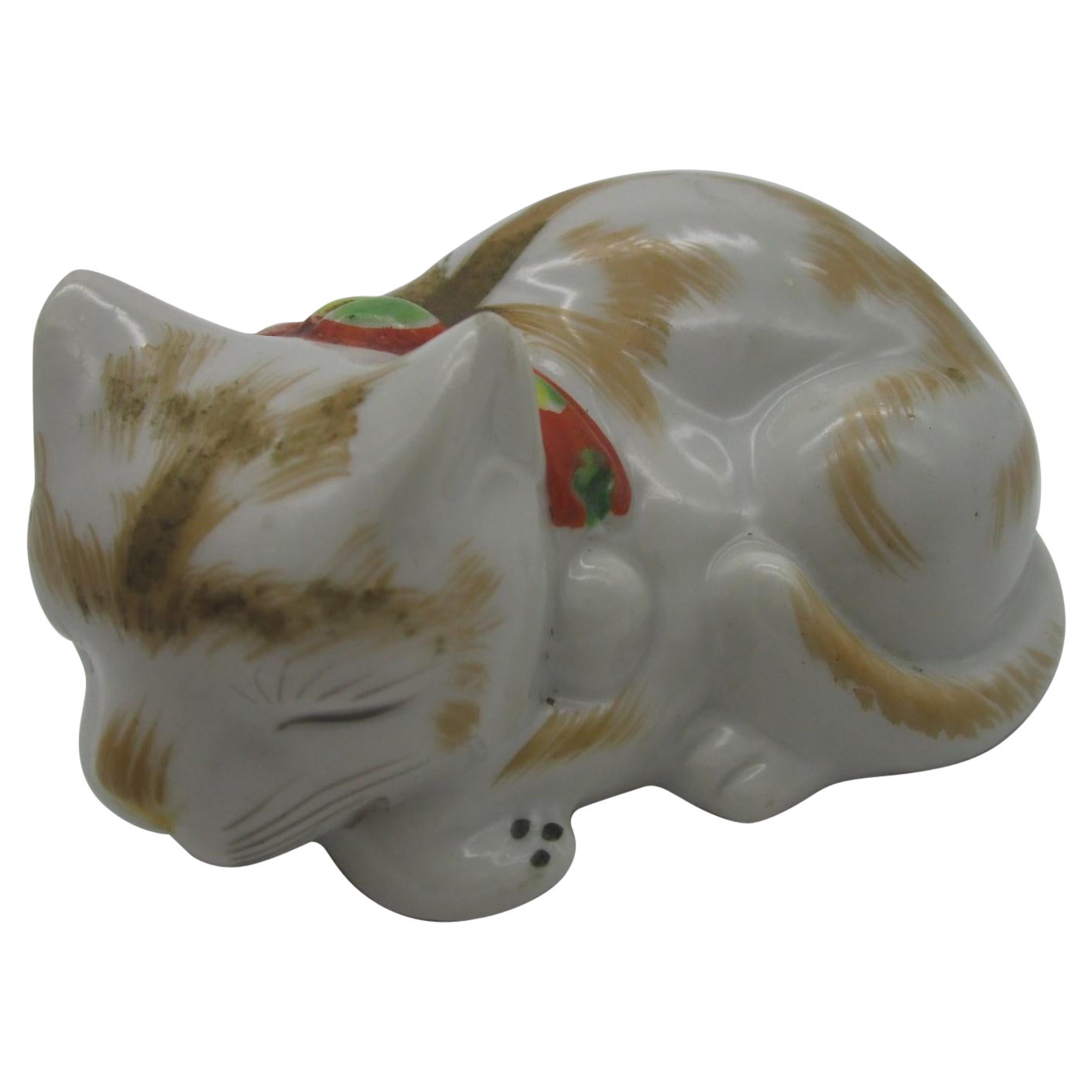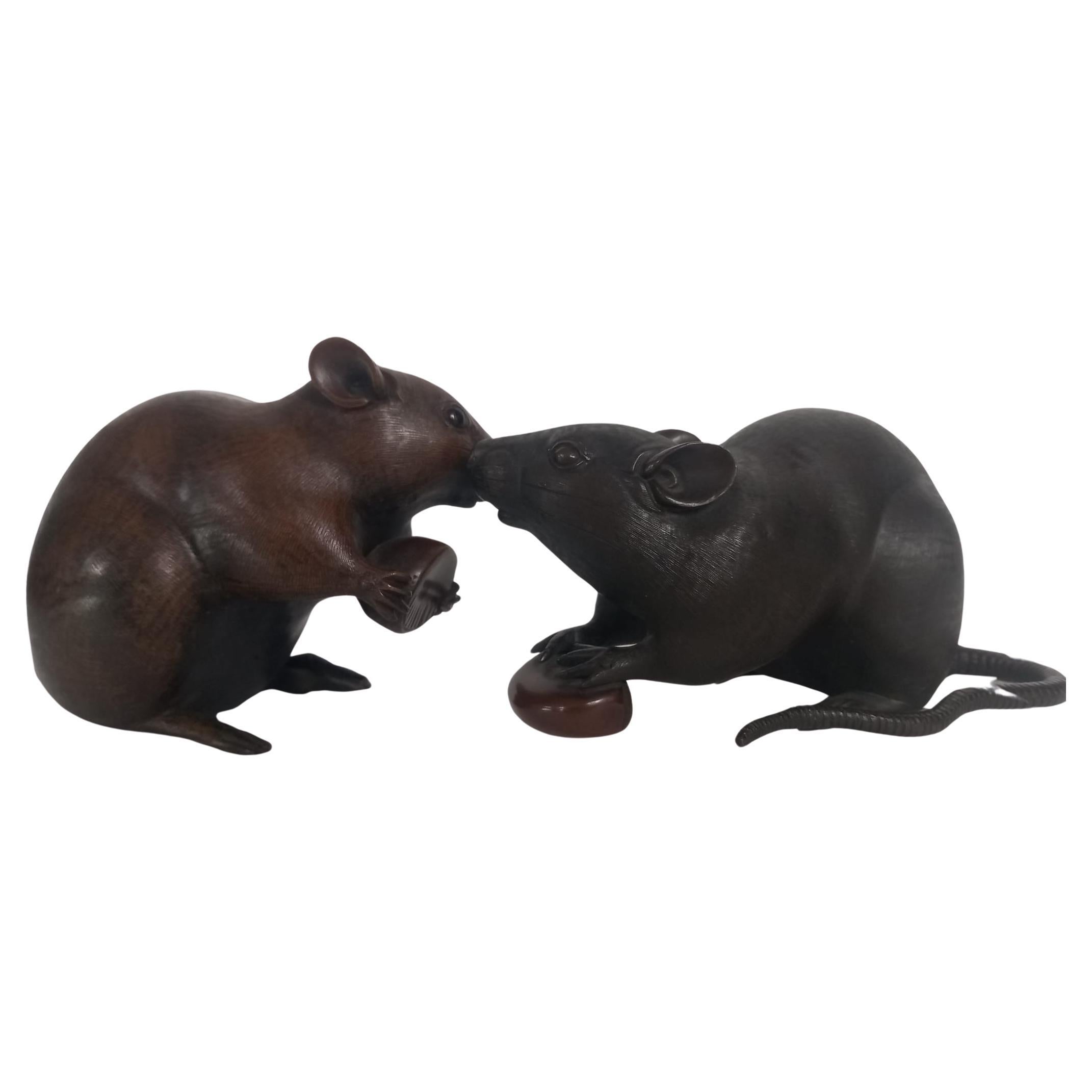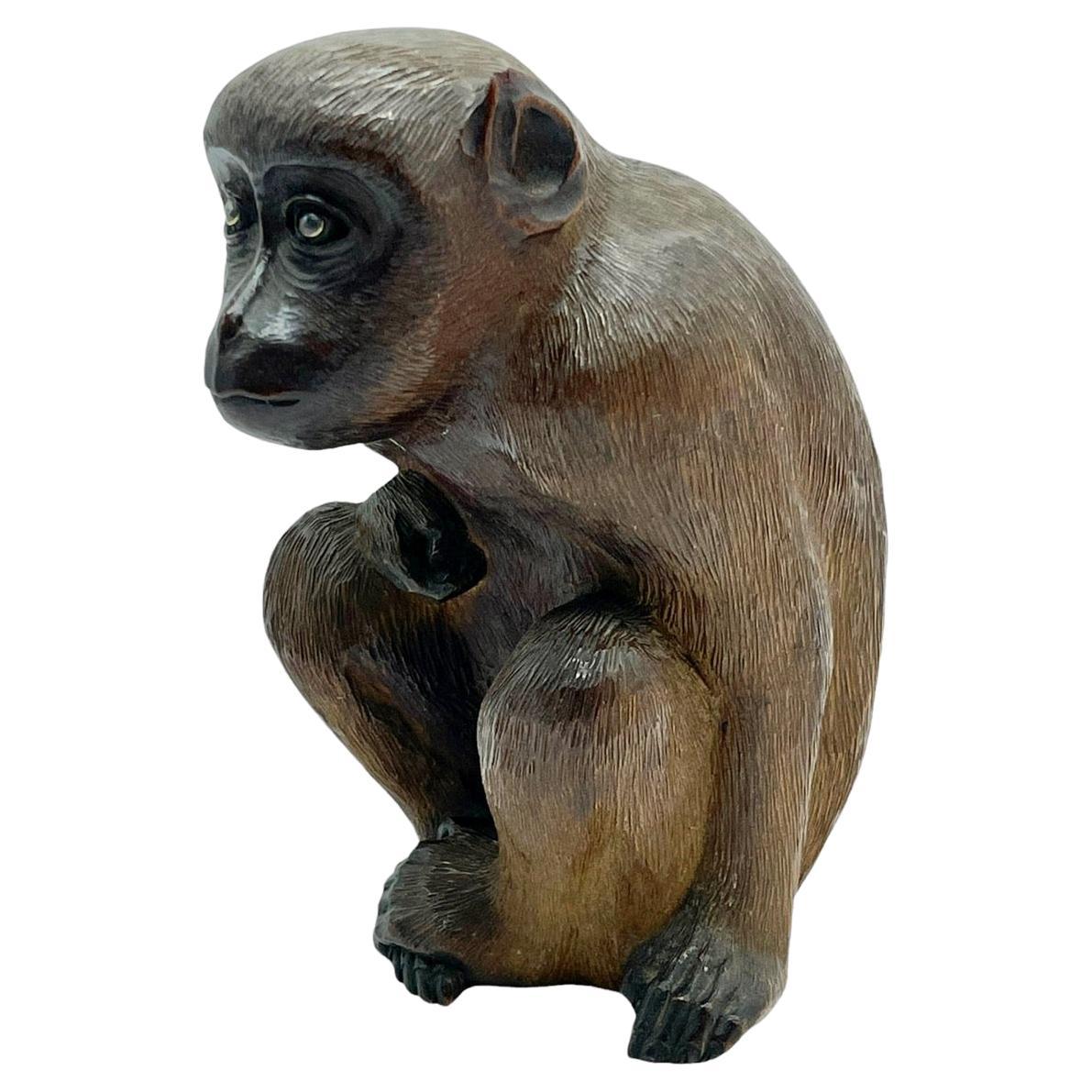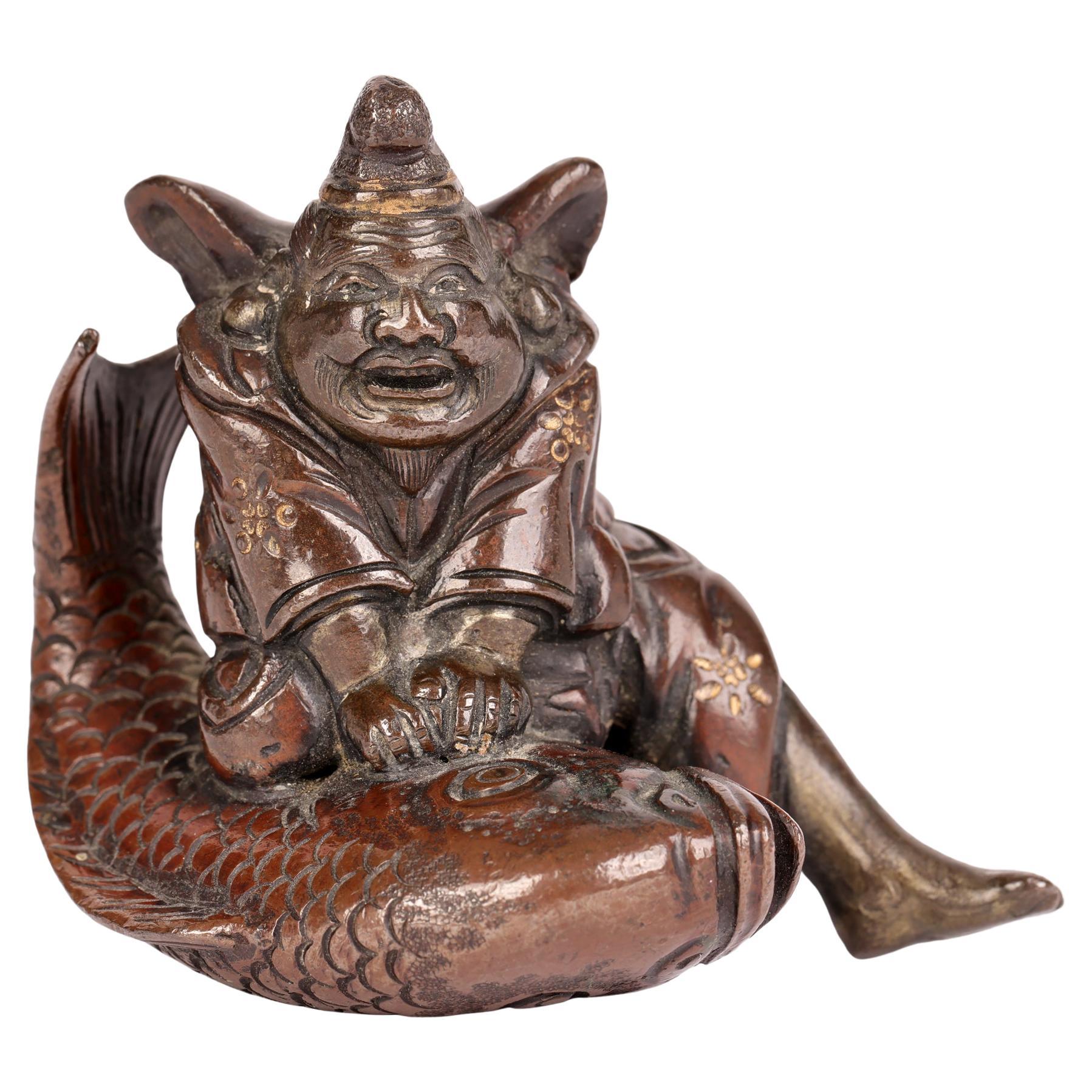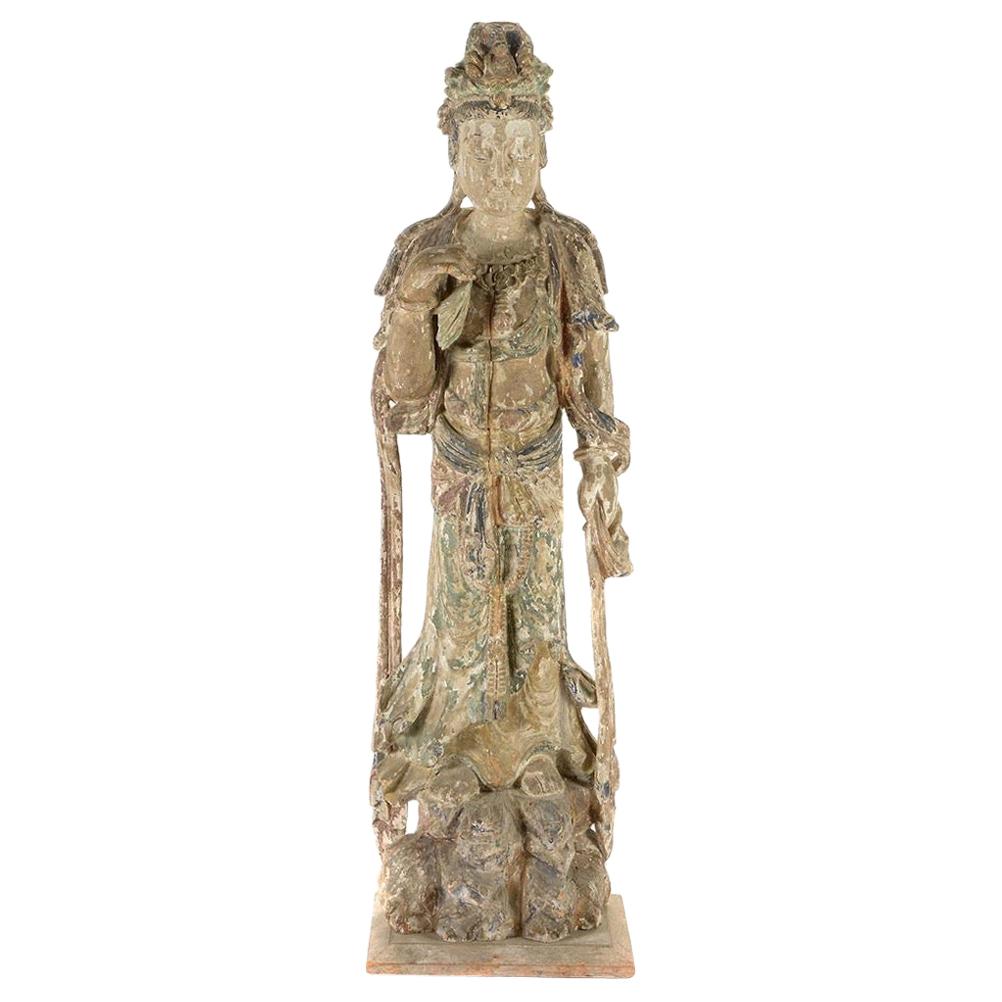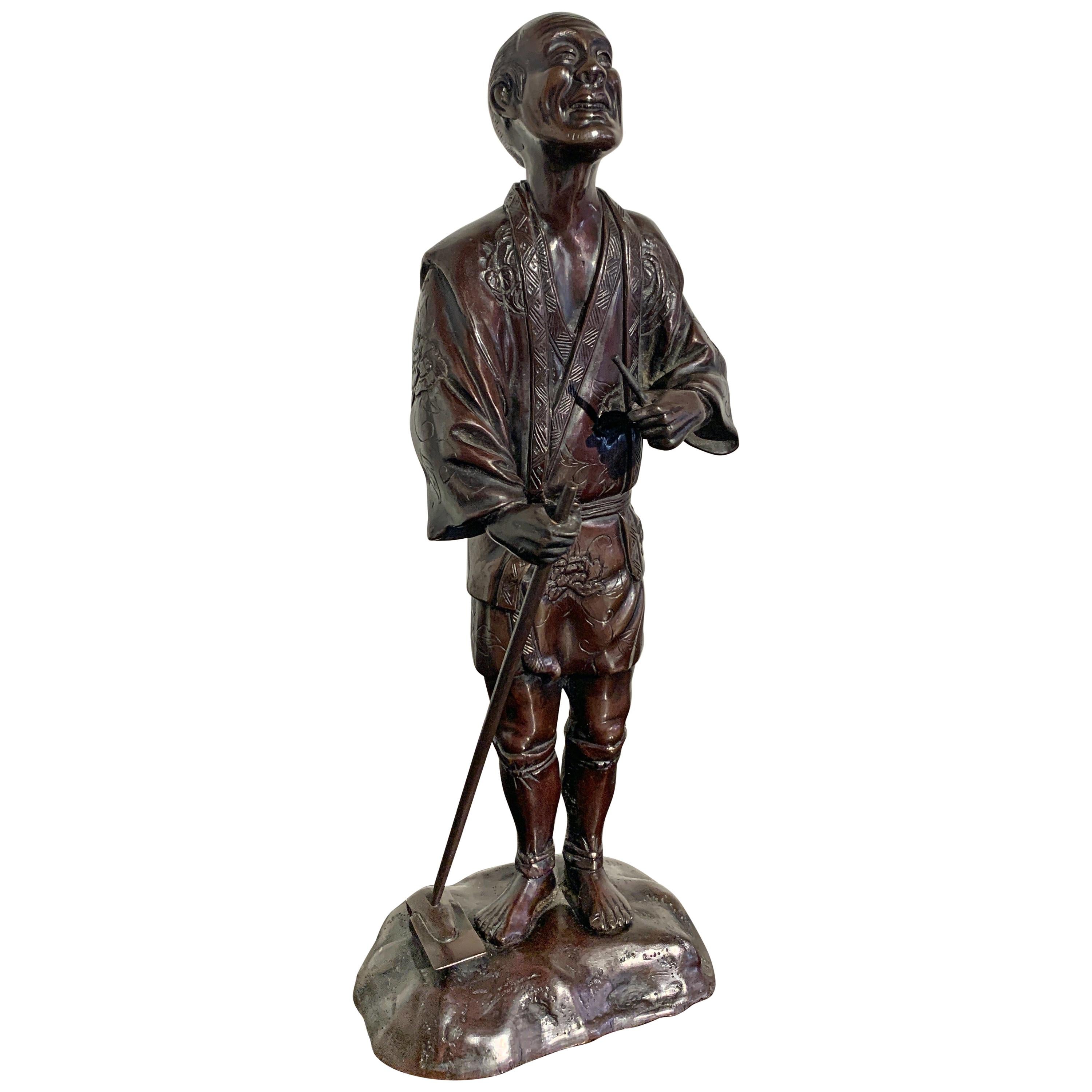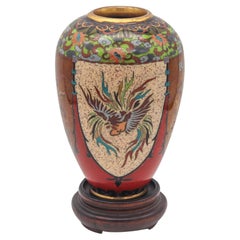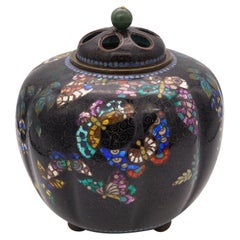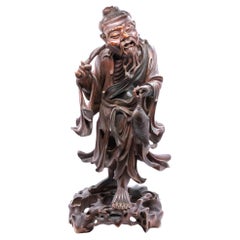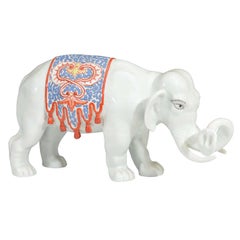
Japan 1890 Meiji Period Seated Figure of Quan Yin in Enamelled White Porcelain
View Similar Items
Want more images or videos?
Request additional images or videos from the seller
1 of 8
Japan 1890 Meiji Period Seated Figure of Quan Yin in Enamelled White Porcelain
About the Item
- Dimensions:Height: 11.75 in (29.85 cm)Width: 8.5 in (21.59 cm)Depth: 7 in (17.78 cm)
- Style:Meiji (Of the Period)
- Materials and Techniques:
- Place of Origin:
- Period:
- Date of Manufacture:1890
- Condition:Wear consistent with age and use. It is in perfect condition with no chips, cracks or previous restorations. The bronze base is suited with an hole in the back part, to convert back into a lamp.
- Seller Location:Miami, FL
- Reference Number:Seller: D0000RNMG/.11111stDibs: LU8303234000322
About the Seller
5.0
Platinum Seller
These expertly vetted sellers are 1stDibs' most experienced sellers and are rated highest by our customers.
1stDibs seller since 2023
63 sales on 1stDibs
More From This SellerView All
- Japan 1890 Meiji Period Decorative Vase In Cloisonné Enamel With Wood BaseLocated in Miami, FLJapanese vase from the Meiji Period (1868-1912). Beautiful antique decorative vase, created in Japan during the Meiji period (1868-1912), circa 1890s. It was carefully crafted in so...Category
Antique 1890s Japanese Meiji Metalwork
MaterialsBronze, Enamel
- Japan 1890 Meiji Period Bronze Koro Censer in Cloisonne Enamel with Jade LidLocated in Miami, FLJapanese Koro from the Meiji Period (1868-1912). Beautiful antique ten sides fluted koro censer, created in Japan during the Meiji period (1868-1912), ci...Category
Antique 1890s Japanese Meiji Metalwork
MaterialsJade, Gold, Silver, Bronze, Enamel
- Japan 1890 Meiji Period Ebisu Sculpture in Wood Carving of an Old FishermanLocated in Miami, FLAn extremely well detailed wood carving of Ebisu, as a fisherman. Beautiful and well detailed sculpture, created in Japan during the Meiji dynastic period (1868-1912) back in the 1890's. This piece represent the god of good fortune Ebisu. Was exceptionally carved and executed from one solid single piece of rose wood, showing a gorgeous face expression, with intricate details in the hands and feets, he's carrying as usual a rod and a fish. Ebisu (yebisu), ???, god of fortune, the ocean and fisherman. In the japanese mythology is one of the seven gods of luck, sichi-fuku-jin, the patron of the fisherman and tradesmen. he is depicted as a bearded, smiling fisherman with formal long court ropes, often carrying a rod in one hand and a tai, symbolic fish of the good luck, in the other. The height is 14.25 inches (36.20 cm) and the base measurements is 6.5 by 6.45 inches (16.5 x 16.38 cm). Meiji period, is an era of Japanese history that extended from October 23, 1868 to July 30, 1912.The Meiji era was the first half of the Empire of Japan, when the Japanese people moved from being an isolated feudal society at risk of colonization by Western powers to the new paradigm of a modern, industrialized nation state and emergent great power, influenced by Western scientific, technological, philosophical, political, legal, and aesthetic ideas. As a result of such wholesale adoption of radically different ideas, the changes to Japan were profound, and affected its social structure, internal politics, economy, military, and foreign...Category
Antique 1890s Japanese Meiji Sculptures and Carvings
MaterialsWood
- Japan 1890 Meiji Period Signed Okimono Sculpture of a Group of Skeletons SmokingLocated in Miami, FLSculptural signed Okimono from the Japanese Meiji period (1868-1912). Very rare, unusual and large sculptural assembling of a dysplaying piece of okimono. Created in Japan during the imperial period of the Meiji (1868-1912). This extraordinary okimono was carefully carved depicting a group of three intricately and realistically rendered carousing skeletons (Gaikotsu) in relax and resting position, drinking and smoking. Two of them, probably males representations are resting on a wicker sofa. The third, is a woman seated in a lower stool offering drinking cups of sake on a round tray. A small rectangular bench is arranged in the scene. The composition is displayed on a four-legged carved wood platform with an inlaid red plaque engraved with the artist's signature. The level of detail and the quality of the carving is truly exceptional. Has an exact measurements of 209.55 mm by 196.85 mm by 127.76 mm (8.25 x 7.75 x 5.03 Inches). After an extensive collection of data, comparables and references to this piece, we have only been able to find only three okimono sculptures like this with similar themes and the same quality of work. References Note: A similar carving of four skeletons playing an animated game of dominos, signed Shutaro in an inlaid rectangular red plaque, was sold in London by Christie’s South Kensington in October 14 2014, Lot 120 Sale 5546. References Note: A similar carving with four skeletons in an otherwise typical victorian scene of a photographer and three sitters signed Shutaro in an inlaid rectangular red plaque, was sold in Edinburgh at Lyon & Turnbull in November 7, 2018. References Note: A similar carving with five skeletons seated, playing cards and drinking, was sold in London by John Nicholson Fine Art on September 26, 2018. Meiji period, is an era of Japanese history that extended from October 23, 1868 to July 30, 1912. The Meiji era was the first half of the Empire of Japan, when the Japanese people moved from being an isolated feudal society at risk of colonization by Western powers to the new paradigm of a modern, industrialized nation state and emergent great power, influenced by Western scientific, technological, philosophical, political, legal, and aesthetic ideas. As a result of such wholesale adoption of radically different ideas, the changes to Japan were profound, and affected its social structure, internal politics, economy, military, and foreign relations. The period corresponded to the reign of Emperor Meiji. It was preceded by the Keio era and was succeeded by the Taisho era, upon the accession of Emperor Taisho. Okimono, is a Japanese term meaning for display an ornament; art object; or decorative object, usually displayed in a tokonoma or butsudan "Buddhist altar". It is an ornament or figure, especially one placed in a guest room. An okimono may be a small Japanese...Category
Antique 1890s Japanese Meiji Sculptures and Carvings
MaterialsWood
- Japan 1890 Meiji Period Signed Assembling of Okimono with a Group of SkeletonsLocated in Miami, FLA signed Okimono from the Japanese Meiji period (1868-1912). Very rare, unusual and large sculptural assembling of a dysplaying piece of okimono. Created in Japan during the imperial period of the Meiji (1868-1912). This extraordinary piece okimono sculpture depict a group of four intricately and realistically rendered carousing males skeletons representations (Gaikotsu) standing in several position. One skeleton is crouched down playing with mouses in the floor. The second is seated resting in the other's back, peacefully smoking opium. The others two are fully standing in interacting position. The entire composition is arranged freely displayed on the wood base including a woven basket, apparently with food and four playfull mouses. There are an extra five mouses in different positions, freely playing around, all of them with the eyes accented with carved black ebony. The composition is displayed on a four-legged free form carved wood platform with an inlaid red plaque engraved with the artist's signature. The level of detail and the quality of the carving is truly exceptional. Has an exact measurements of 216.15 mm by 139.7 mm by 359.41 mm (8.51 x 5.5 x 14.15 Inches). After an extensive collection of data, comparables and references to this piece, we have only been able to find only three okimono sculptures like this, with similar themes and the same quality of work. References Note: A similar carving of four skeletons playing an animated game of dominos, signed Shutaro in an inlaid rectangular red plaque, was sold in London by Christie’s South Kensington in October 14 2014, Lot 120 Sale 5546. References Note: A similar carving with four skeletons in an otherwise typical victorian scene of a photographer and three sitters signed Shutaro in an inlaid rectangular red plaque, was sold in Edinburgh at Lyon & Turnbull in November 7, 2018. References Note: A similar carving with five skeletons seated, playing cards and drinking, was sold in London by John Nicholson Fine Art on September 26, 2018. Meiji period, is an era of Japanese history that extended from October 23, 1868 to July 30, 1912.The Meiji era was the first half of the Empire of Japan, when the Japanese people moved from being an isolated feudal society at risk of colonization by Western powers to the new paradigm of a modern, industrialized nation state and emergent great power, influenced by Western scientific, technological, philosophical, political, legal, and aesthetic ideas. As a result of such wholesale adoption of radically different ideas, the changes to Japan were profound, and affected its social structure, internal politics, economy, military, and foreign relations. The period corresponded to the reign of Emperor Meiji. It was preceded by the Keio era and was succeeded by the Taisho era, upon the accession of Emperor Taisho. Okimono, is a Japanese term meaning for display an ornament; art object; or decorative object, usually displayed in a tokonoma or butsudan "Buddhist altar". It is an ornament or figure, especially one placed in a guest room. An okimono may be a small Japanese carving...Category
Antique 1890s Japanese Meiji Sculptures and Carvings
MaterialsWood
- KPM Germany 1950 Seated Monkey Eating A Banana Figure In White Glazed PorcelainBy KPM PorcelainLocated in Miami, FLA porcelain monkey designed by KPM. A beautiful vintage decorative piece, created Berlin, Germany by the royal porcelain factory company of KPM (Königliche Porzellan-Manufaktur). Fi...Category
Vintage 1950s German Mid-Century Modern Animal Sculptures
MaterialsPorcelain
You May Also Like
- Japanese White Porcelain Elephant; Meiji PeriodLocated in New York, NYA Japanese decorative porcelain elephant with red and blue vegetal motif blanket detail. 4383Category
20th Century Japanese Ceramics
MaterialsPorcelain
- Meiji Period Japanese Bronze Figure of a FarmerLocated in Brighton, SussexA fine quality, late 19th century (Meiji period 1868-1912) Japanese bronze statue of a farmer. Wearing a Sedge hat and carry his crop of daikon...Category
Antique Late 19th Century Japanese Figurative Sculptures
MaterialsBronze
- Japanese Meiji Period Gold White Porcelain Sleeping Cat Sculpture, circa 1910Located in Takarazuka, JPExquisite Meiji period Japanese Kutani sculpture of a sleeping cat in fine porcelain, inspired by the small wooden sculpture at the entrance of...Category
Early 20th Century Japanese Meiji Animal Sculptures
MaterialsGold
- Japanese Meiji Period Bronze Farm Girl, 1890Located in Brighton, SussexA very good quality late 19th Century (Meiji period 1868-1912) Japanese bronze statue of a farm girl holding a Hoe and wearing a wide brimmed w...Category
Antique 19th Century Japanese Figurative Sculptures
MaterialsBronze
- ANDREA BY SADEK White Porcelain Quan Yin Goddess of Mercy Figurines - PairLocated in Charlotte, NCA pair of Asian Chinese Quan Yin Goddess of Mercy figurines by Andrea by Sadek. Hand painted, white in color glazed porcelain. Made in Japan, in the l...Category
Late 20th Century Japanese Chinoiserie Figurative Sculptures
MaterialsPorcelain
- A Japanese bronze of two rats (Meiji Period)Located in London, GBSet contains two: A Japanese bronze of a rat, Meiji Period, signed, approximately 9cm long x 8cm high and another Japanese bronze of a rat, signed, seated on its back legs, brown pat...Category
Antique Late 19th Century Japanese Meiji Animal Sculptures
MaterialsBronze
$3,135 / set
Recently Viewed
View AllMore Ways To Browse
Seat And A Half
Porcelain Enamel Flowers
Porcelain First Period
Rare Clothes
Imperial Japan
Gilded Era
Meiji Enamel
Imperial Enamel
Japanese Military
Porcelain Emperor
Green Enameled Bronze
Meiji China
Lotus Flower White
Relief Sculpture Face
Chinese Porcelain Seat
Antique Chinese Porcelain Figure
Military China
Antique Chinese Seal
